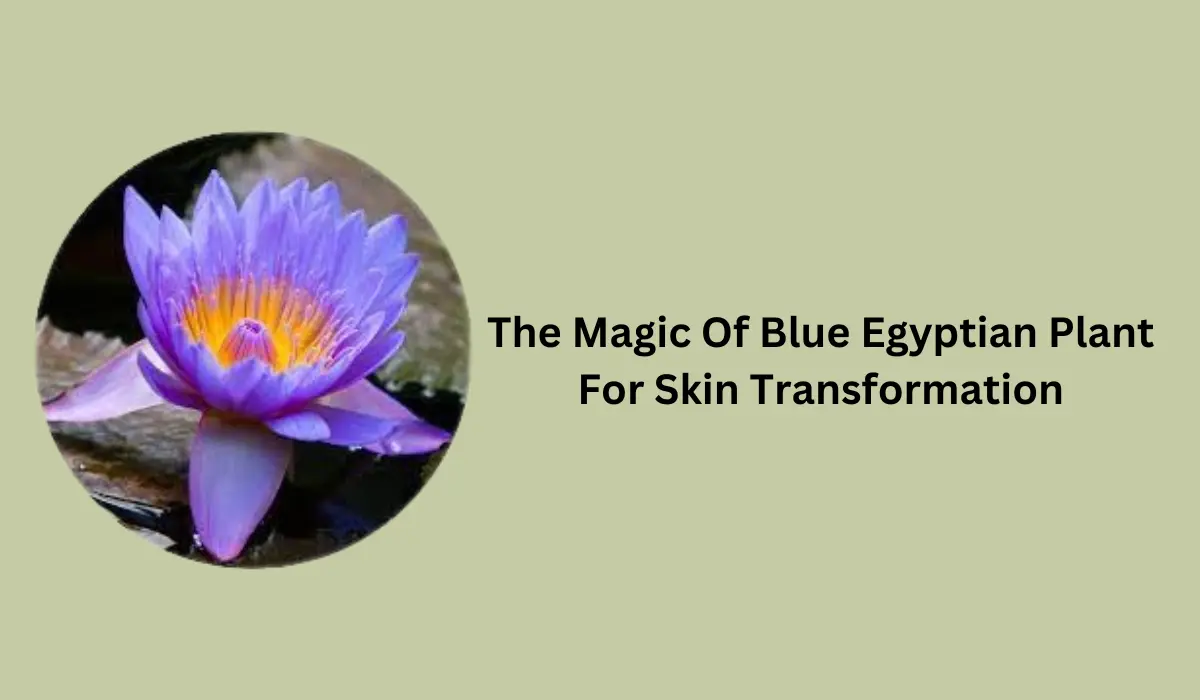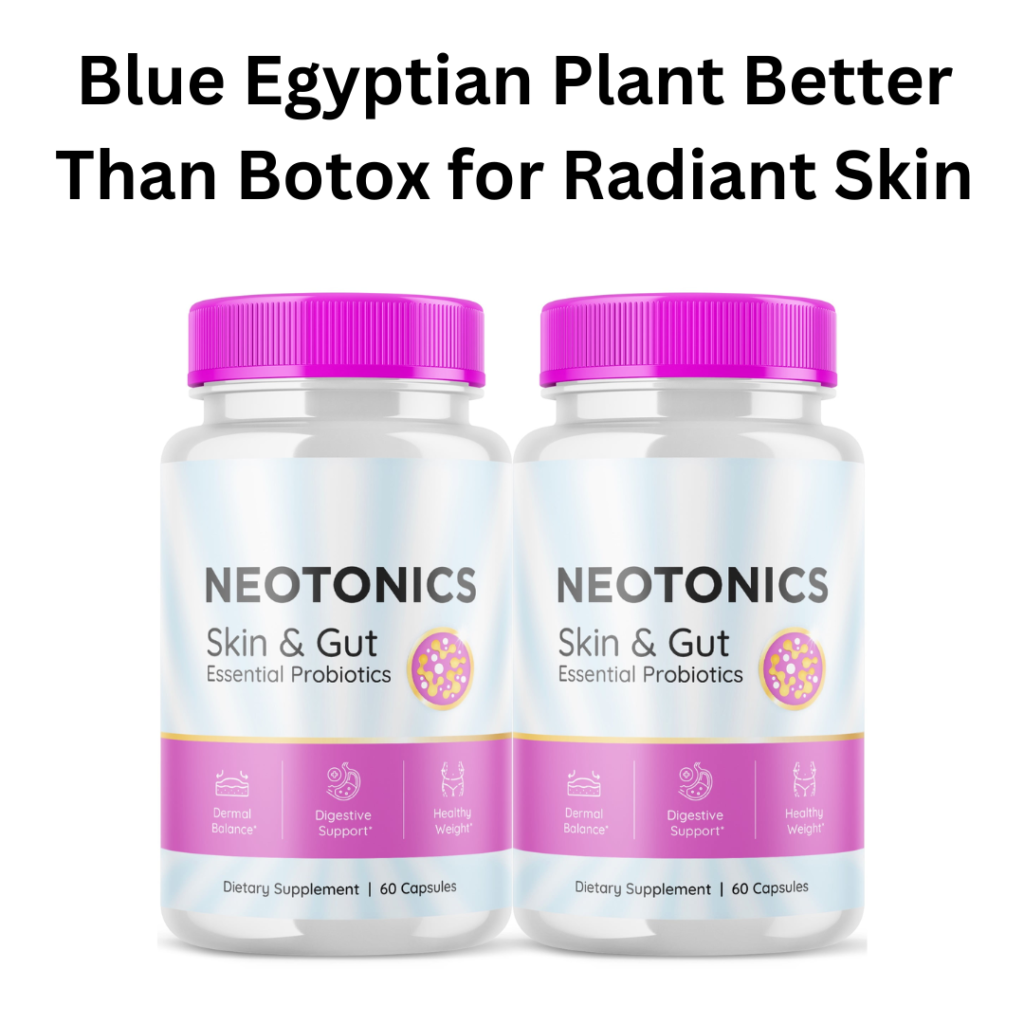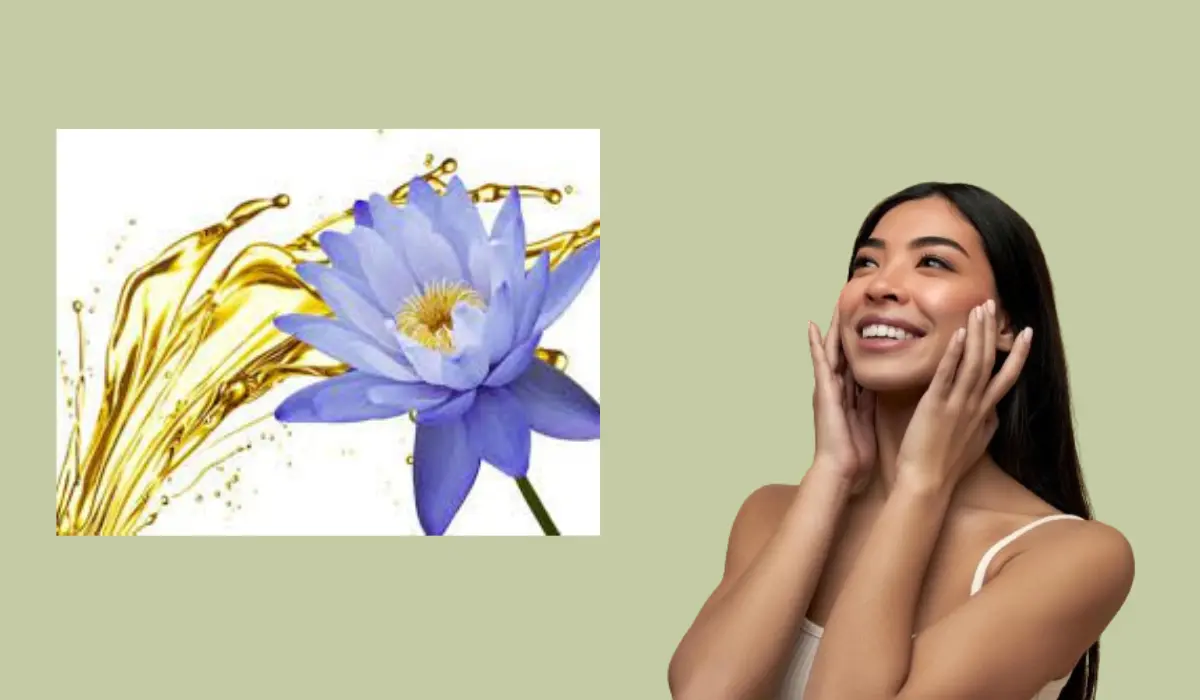Blue Egyptian Plant For Skin Care Reviews

The beauty industry is constantly seeking the next revolutionary ingredient, and a recent surge of interest has focused on a plant with a rich history and striking color: the blue Egyptian lotus, or Nymphaea caerulea. Claims of its potent skincare benefits have flooded social media, leaving consumers eager to understand if this ancient bloom truly holds the key to radiant skin or if it's merely another fleeting trend fueled by hype.
At the heart of this burgeoning trend lies a crucial question: Does scientific evidence support the claims of blue Egyptian lotus’s efficacy in skincare? This article will delve into the available research, explore expert opinions, and examine consumer reviews to provide a balanced assessment of the plant's potential benefits and limitations. We will also analyze the sourcing and sustainability concerns associated with its increasing popularity. Ultimately, our goal is to separate fact from fiction and empower readers to make informed decisions about incorporating blue Egyptian lotus into their skincare routines.
Historical Significance and Traditional Uses
The blue Egyptian lotus boasts a long and fascinating history, deeply intertwined with ancient Egyptian culture. It was revered as a sacred symbol of rebirth and the sun god Ra, often depicted in art, religious ceremonies, and everyday life. Its petals were even steeped in wine to create an intoxicating beverage.
Beyond its symbolic value, the plant was also traditionally used for its medicinal properties. Historical texts suggest it was employed to alleviate pain, reduce inflammation, and promote relaxation. These traditional uses hint at potential skincare benefits that are now being explored in the modern beauty industry.
The Science Behind the Claims
Modern research is beginning to unravel the chemical composition of the blue Egyptian lotus, revealing a complex profile of potentially beneficial compounds. Studies have identified the presence of antioxidants, including flavonoids and phenolic acids, which are known to protect the skin from damage caused by free radicals. Free radicals are unstable molecules that contribute to premature aging and various skin conditions.
Furthermore, some research suggests that the plant may possess anti-inflammatory properties. In vitro studies have shown that extracts from the blue lotus can inhibit the production of inflammatory markers. This could potentially translate to a soothing effect on the skin, reducing redness and irritation.
However, it’s crucial to acknowledge that the majority of the research on blue Egyptian lotus is still preliminary. Most studies have been conducted in vitro or on animal models, and more robust clinical trials on human subjects are needed to confirm these findings and determine optimal dosages and delivery methods.
Expert Opinions and Dermatological Perspectives
Dermatologists remain cautiously optimistic about the potential of blue Egyptian lotus in skincare. "The antioxidant and anti-inflammatory properties observed in preliminary research are certainly promising," says Dr. Anya Sharma, a board-certified dermatologist at the Skin Health Institute. "However, we need more rigorous studies to understand its full potential and any potential side effects."
Dr. Sharma also emphasizes the importance of considering the source and formulation of products containing blue Egyptian lotus. "The quality of the extract can vary significantly depending on how the plant is grown and processed," she warns. "Look for products from reputable brands that prioritize sustainable sourcing and provide clear information about the concentration of blue lotus extract."
Another concern raised by dermatologists is the potential for allergic reactions. As with any new ingredient, it's essential to perform a patch test before applying blue Egyptian lotus products to the entire face. Individuals with sensitive skin or known allergies should exercise particular caution.
Consumer Reviews and Anecdotal Evidence
Online reviews of skincare products containing blue Egyptian lotus are mixed, reflecting the early stage of research and varying product formulations. Some users report noticeable improvements in skin hydration, radiance, and overall complexion. Many users praise the subtle, calming scent of the lotus extract.
However, other users report little to no discernible difference after using blue lotus products. A small percentage of users have reported experiencing mild skin irritation or allergic reactions. These varying experiences highlight the importance of individual skin sensitivity and the need for further research to identify which skin types benefit most from blue Egyptian lotus.
Sourcing and Sustainability Concerns
The increasing demand for blue Egyptian lotus raises concerns about its sustainable sourcing. As with any natural ingredient, overharvesting can deplete wild populations and disrupt ecosystems. It is important that the ingredient is sourced responsibly.
Several organizations are working to promote sustainable cultivation practices for blue Egyptian lotus. These efforts focus on ensuring that the plant is grown in an environmentally friendly manner, without the use of harmful pesticides or fertilizers. Consumers can support these efforts by choosing products from brands that prioritize sustainable sourcing and transparency.
The Future of Blue Egyptian Lotus in Skincare
While the hype surrounding blue Egyptian lotus may be slightly ahead of the scientific evidence, the plant's potential in skincare is undeniable. Further research is needed to fully understand its benefits and limitations. However, the preliminary findings on its antioxidant and anti-inflammatory properties are encouraging. The industry needs to investigate the ingredient.
As research progresses and sustainable sourcing practices become more widespread, blue Egyptian lotus may become a valuable addition to the arsenal of ingredients used in skincare formulations. For now, consumers should approach blue lotus products with cautious optimism, prioritizing products from reputable brands and performing patch tests before widespread use.
The key takeaway is to remember that even the most promising natural ingredients require rigorous scientific evaluation and responsible sourcing to ensure their effectiveness and sustainability. Only then can we truly unlock their potential to enhance our skin health and well-being.





![Blue Egyptian Plant For Skin Care Reviews Neotonics it Work? [HONEST REVIEW]Blue Egyptian Plant For Skin](https://i.ytimg.com/vi/-KN9l9oMY9o/maxresdefault.jpg)











